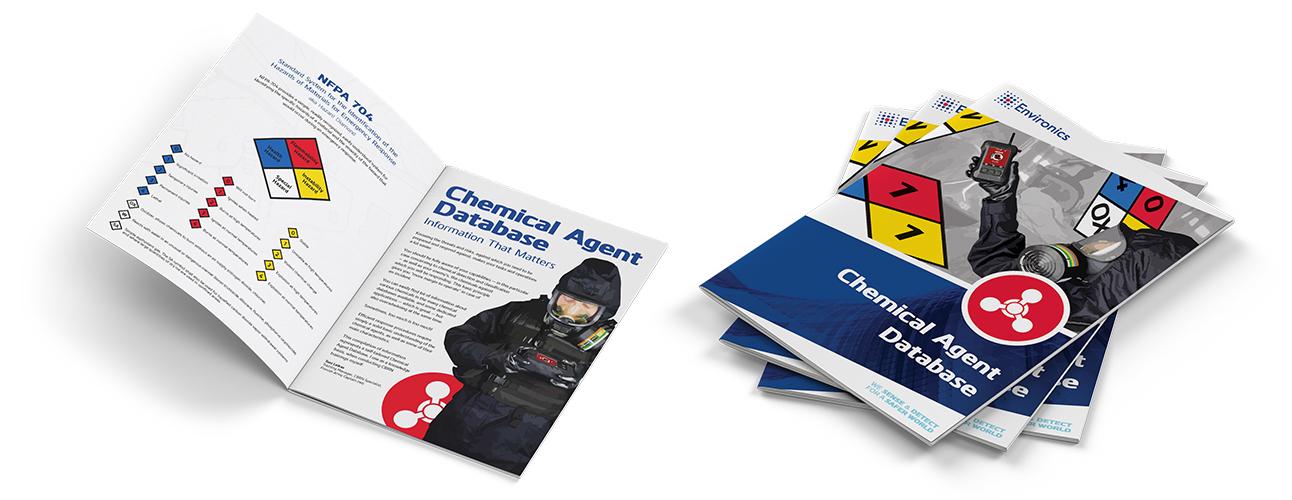What do we know about it?
The new kid in town! In recent years, sad and terrific incidents involving this “new kid” are on the raise in international news headlines. Who (what) is this Newbie, Fourth Generation Agent – FGA, Nerve Agent -NA. A-agents or Novichok? Does it have different names in different towns? Is it a game changer in an international relationship?
After WWII, when the cold war started, the UK and USA started developing new, more poisoning and with new capabilities chemical agents, which ultimately led to the creation of chemical warfare agents: VX. As a reactive move, the U.S.S.R. started new chemical agent developing projects itself: FOLIANT and NOVICHOK. The official purpose of these pesticide research programs was to develop new chemicals for peaceful use, however, as it’s known nowadays, the real purpose was to develop the first 3rd generation chemical warfare agents, like RVX. Since 1970’s, the development was more focused on new types of organophosphorus compounds aka Novichok. These are similar to Sarin and VX, which inhibit the enzyme acetylcholinesterase, and cause a biochemical logjam that cripples the nervous system.

Novichok development required several advanced capabilities, and had targets to achieve. This needed to be a chemical of binary type. First, as an individual agent, depending on its chemical subgroups, it may not violate the Chemical Weapons Treaty and, hence, it would be “legal.” The chemical’s characteristics must ensure it would penetrate NATO soldier’s personal protection equipment, and be undetectable in standard NATO chemical detectors and detection equipment, at that time. Other goal was to develope a safer handle extremely toxic and stable nerve agent.
The first reported appearance of these Novichok(s) agents dates back to the mid of 1990’s, when the secret Soviet chemical weapon program came to public. According to this breakthrough revelation, the program was developing various newcomer agents. The first three of these were Substance -33, A-230 and A-232. The structure and synthesization of these agents was similar to normal nerve agents – 3rd generation agents. Novichok-5 was synthesized off based on A-232 structure, being the first binary type of Newcomer agents in year 1989. Hundreds of Novichok agents were synthesized but only Substance-33, A-230, A-232, A-234, Novichok-5 and Novichok-7 are known to be weaponised. Most weaponised Novichok agents are believed to be binary. In the case of A-234, the binary agents were reported to be acetonitrile and a low potency organophosphate.
Novichok(s) are classified as fourth generation agents (FGA) in military classification, according to its effects on humans. Only very little information is available about physical-chemical properties of A-agents and Novichok(s). Novichok-5 is reported to be 8 times more effective than VX and Novichok-7 is 10 times more effective than Soman. Novichok- 5 and Novichok-7 are reported to act very rapidly, penetrating the skin, and respiratory system.
According to public sources, the toxicity between “common” nerve agents and “clandestine” Novichok(s), reinforces these agent’s vicious. For example, Sarin LCt50 (mg*min/mᶾ) is 100, VX is 50 but A232 is between 6 to 10 (mg*min/mᶾ). Novichok(s) are not even very toxic, they are also even less volatile than VX-nerve agents, which means they are the slowest to evaporate from liquid to vapour form. Novichok(s) are non-volatile compounds (NVOC) and highly persistent. Their vapour pressure is 5 to 10 times lower than VX. Because Novichok(s) are highly persistent agents, and do not evaporate easily, they pose a significant cross-contamination hazard. Early recognition may be extremely challenging due to the possibility of delayed onset of symptoms for up to 3 days post exposure. This fact, together with extremely low volatility, ensures the resorption of these substances through unprotected skin into the bloodstream. Symptoms range from sweating and twitching, to seizures and an inability to breathe.
“- It’s real torture, it’s impossible to imagine. Even in low doses the pain can go on for weeks. You cannot imagine the horror, it’s so bad.” Once exposed to Novichok(s), there is no “cure;” only lengthy and difficult treatment. “It is likely that there will be long-term neurological problems for a person who has been exposed to these agents.” Comments from agent developer and medical doctor Vil Mirzayanov.
Ma Alexandra. 2018. Business Insider. ‘You cannot imagine the horror, it’s so bad’: Russian scientist who developed Novichok describes agonising convulsions caused by poison used on Sergei Skripal
Consulted on 15.2.2021
Since several cases have rose the possibility of rogue use of Novichok, authorities have updated their response procedures and are more aware of the possibility of use of nerve agents — specially Novichok(s) — for assassination purposes, both in a small scale not in a mass-events. The use of Novichok can be identified by taking samples from the scene and biological samples from the victims. For example, the Organization for the Prohibition of Chemical Weapons (OPCW) confirmed the presence of Novichok in biological sampling from the Skripals (Salisbury 2018) as well as from the site where the suspected exposure occured.
“Ascertaining the involvement of a Novichok agent and its biotransformation products in this case was only achieved several days after establishing the diagnosis of cholinesterase inhibitor poisoning and did not affect therapeutic decision(…)”
Agence France-Presse in Berlin. 2020. The Guardian. Novichok diagnosed within days, say Alexei Navalny’s German doctors.
Consulted on 15.2.2021
Because Novichok(s) have no colour, taste, or odour, these could be transported through security screening without arousing any suspicion. The hazardous use of these agents is most likely to be happen under liquid form. Novichok agents can also be converted into a dusty formulation, by absorbing droplets into a solid carrier, like silica gel or talk. Because of these — and other previously mentioned — characteristics, Novichok is more challenging to detect than other chemicals, not forgetting that it was developed to not be detectable with the most commonly used NATO chemical detectors.
Chemical warfare agent’s detectors can possibly “see” Novichok because of its organophosphorus compounds – a typical nerve agent compound. We have to be realistic and remember how difficult it is to develop a detector that can detect something which is not officially available. So, the chemical reaction based chemical detection paper, may be useful in detecting liquid Novichok(s) in first hand. But most importantly, detection failure to detect the agent does not mean that Novichok is not present.
The development of all nerve agents — not only Novichok(s) — started with peaceful purposes as pesticide enhancing programs, but ended in the “wrong way” because they achieved substances that were too poisonous. I’m not saying there aren’t research programs with beneficial and sincere goals… Remember, all nerve agents, pesticides and Novichoks are based on organophosphorus compounds.
“There’s talk on the street, it sounds so familiar
Great expectations everybody’s watching you
People you meet, they all seem to know you
Even your old friends treat you like you’re something new”
Eagles, The new kid in town
Would you like to know more?

Get your own issue of the “Chemical Agent Database – Information
That Matters” and gain access to extra content!
Leave a Reply